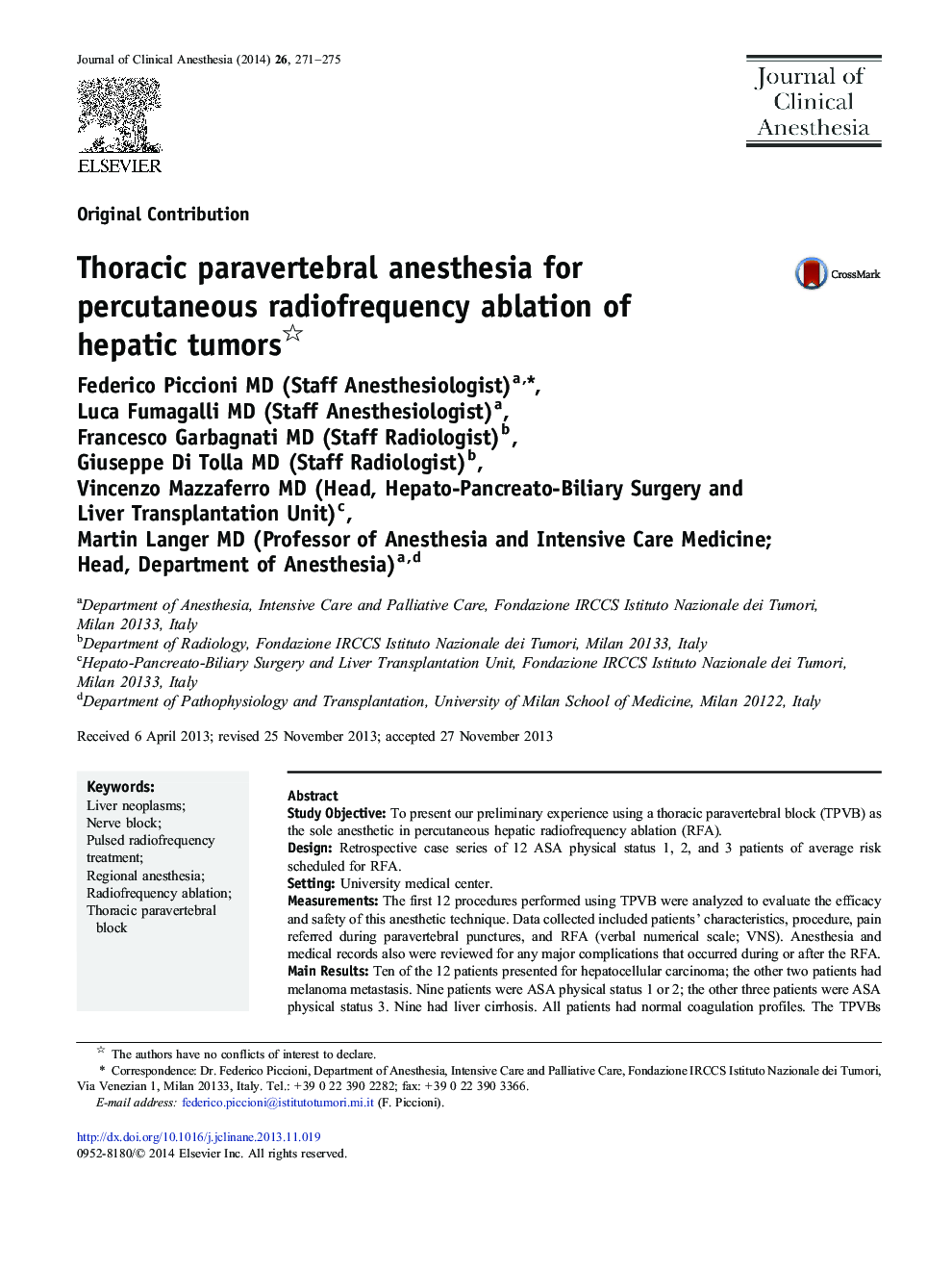| Article ID | Journal | Published Year | Pages | File Type |
|---|---|---|---|---|
| 2762323 | Journal of Clinical Anesthesia | 2014 | 5 Pages |
Study ObjectiveTo present our preliminary experience using a thoracic paravertebral block (TPVB) as the sole anesthetic in percutaneous hepatic radiofrequency ablation (RFA).DesignRetrospective case series of 12 ASA physical status 1, 2, and 3 patients of average risk scheduled for RFA.SettingUniversity medical center.MeasurementsThe first 12 procedures performed using TPVB were analyzed to evaluate the efficacy and safety of this anesthetic technique. Data collected included patients’ characteristics, procedure, pain referred during paravertebral punctures, and RFA (verbal numerical scale; VNS). Anesthesia and medical records also were reviewed for any major complications that occurred during or after the RFA.Main ResultsTen of the 12 patients presented for hepatocellular carcinoma; the other two patients had melanoma metastasis. Nine patients were ASA physical status 1 or 2; the other three patients were ASA physical status 3. Nine had liver cirrhosis. All patients had normal coagulation profiles. The TPVBs were performed in a median time of 6.5 (4–15) minutes. Onset of sensory loss to pinprick test occurred approximately 15 to 20 minutes after the injections. No evidence of bilateral blockade was seen in any patient. In most cases, the extent of anesthesia ranged from T6 to T11 or T12. In one patient (no. 2), the stimulating needle elicited no sensory or motor response at the T7 level; the local anesthetic was then injected one cm beyond the transverse process. All patients were very pleased with their anesthetic care; all were discharged from the hospital with no procedure-related complications.ConclusionThe use of thoracic paravertebral block as the sole anesthetic for RFA of liver produced satisfactory unilateral anesthesia and minor adverse events.
